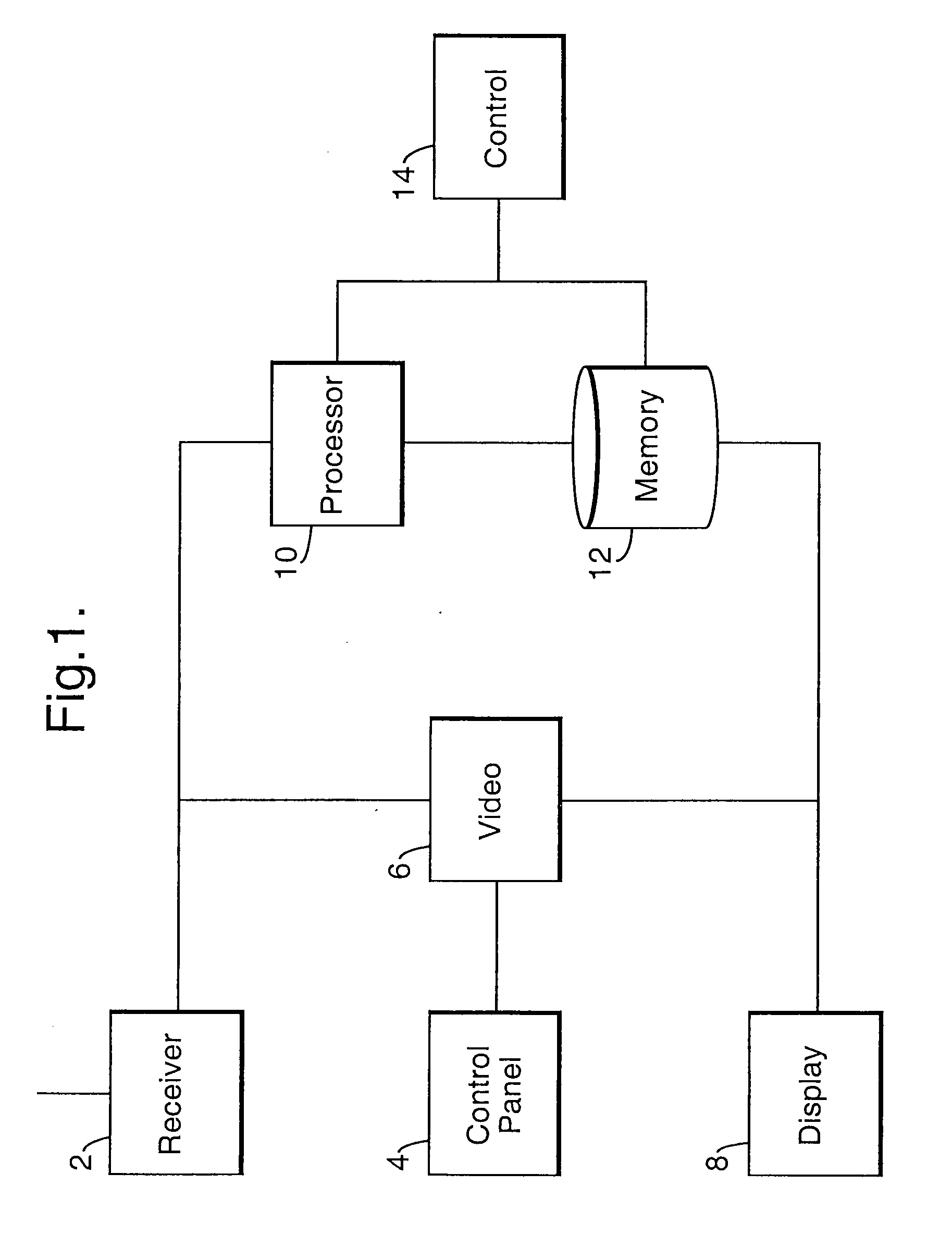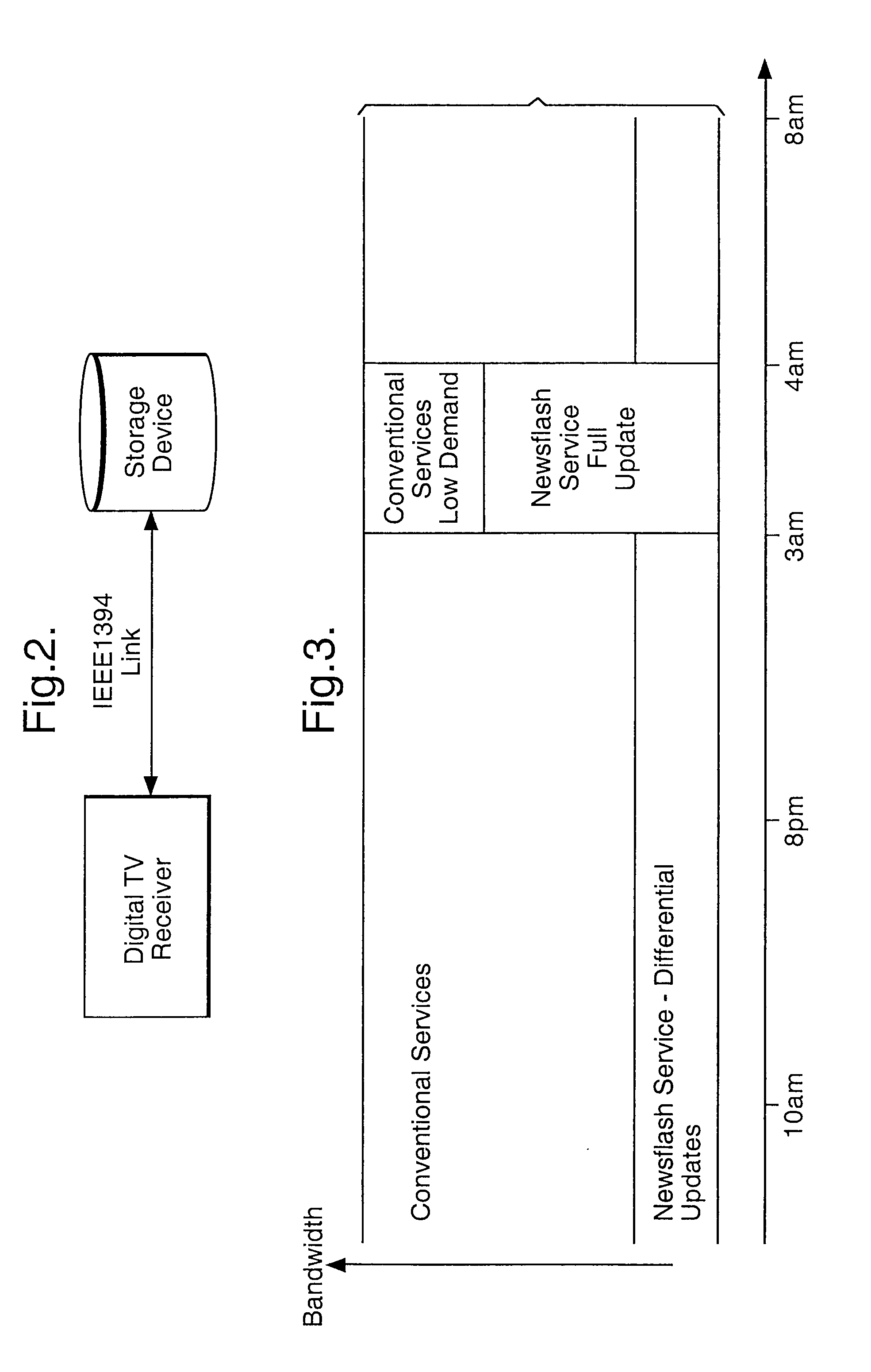Data broadcast method
a broadcast system and data technology, applied in the field of data broadcast system and method, can solve the problems of waste of bandwidth, not appealing to viewers, and very little information, and achieve the effect of data services, and reducing the cost of broadcasting
- Summary
- Abstract
- Description
- Claims
- Application Information
AI Technical Summary
Benefits of technology
Problems solved by technology
Method used
Image
Examples
Embodiment Construction
[0046]The invention will be more clearly understood from the following description, given by way of example, with reference to the accompanying drawings.
[0047]The MPEG video and audio compression system is designed to provide a maximum amount of compression in a broadcast environment. The MPEG video and audio compression system is also designed to allow the decompression to be carried out with a limited amount of memory in the receiver. This allows the decompression system in the receiver to be implemented with less memory and processing—and hence more cheaply—than the compression system in the transmission head-end.
[0048]Even though the digital encoding of information allows many more channels to be transmitted, there is still a limited bandwidth for the transmission of the information. Hence MPEG audio and video channels are constrained to a certain bit rate dependent on the bit rate available.
[0049]There is a trade off between the number of channels carried and the video quality ...
PUM
 Login to View More
Login to View More Abstract
Description
Claims
Application Information
 Login to View More
Login to View More - R&D
- Intellectual Property
- Life Sciences
- Materials
- Tech Scout
- Unparalleled Data Quality
- Higher Quality Content
- 60% Fewer Hallucinations
Browse by: Latest US Patents, China's latest patents, Technical Efficacy Thesaurus, Application Domain, Technology Topic, Popular Technical Reports.
© 2025 PatSnap. All rights reserved.Legal|Privacy policy|Modern Slavery Act Transparency Statement|Sitemap|About US| Contact US: help@patsnap.com



